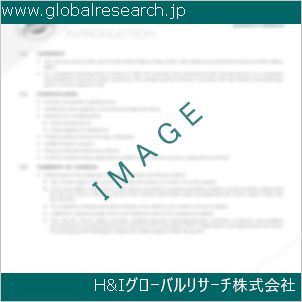Table of Contents
1 Industry Overview of Silicagel
1.1 Definition and Specifications of Silicagel
1.1.1 Definition of Silicagel
1.1.2 Specifications of Silicagel
1.2 Classification of Silicagel
1.3 Applications of Silicagel
1.3.1 Nuclear Application
1.3.2 Non-Nuclear Application
1.4 Industry Chain Structure of Silicagel
1.5 Industry Overview and Major Regions Status of Silicagel
1.5.1 Industry Overview of Silicagel
1.5.2 Global Major Regions Status of Silicagel
1.6 Industry Policy Analysis of Silicagel
1.7 Industry News Analysis of Silicagel
2 Manufacturing Cost Structure Analysis of Silicagel
2.1 Raw Material Suppliers and Price Analysis of Silicagel
2.2 Equipment Suppliers and Price Analysis of Silicagel
2.3 Labor Cost Analysis of Silicagel
2.4 Other Costs Analysis of Silicagel
2.5 Manufacturing Cost Structure Analysis of Silicagel
2.6 Manufacturing Process Analysis of Silicagel
3 Technical Data and Manufacturing Plants Analysis of Silicagel
3.1 Capacity and Commercial Production Date of Global Silicagel Major Manufacturers in 2023
3.2 Manufacturing Plants Distribution of Global Silicagel Major Manufacturers in 2023
3.3 R&D Status and Technology Source of Global Silicagel Major Manufacturers in 2023
3.4 Raw Materials Sources Analysis of Global Silicagel Major Manufacturers in 2023
4 Capacity, Production and Revenue Analysis of Silicagel by Regions, Types and Manufacturers
4.1 Global Capacity, Production and Revenue of Silicagel by Regions 2019-2024
4.2 Global and Major Regions Capacity, Production, Revenue and Growth Rate of Silicagel 2019-2024
4.3 Global Capacity, Production and Revenue of Silicagel by Types 2019-2024
4.4 Global Capacity, Production and Revenue of Silicagel by Manufacturers 2019-2024
5 Price, Cost, Gross and Gross Margin Analysis of Silicagel by Regions, Types and Manufacturers
5.1 Price, Cost, Gross and Gross Margin Analysis of Silicagel by Regions 2019-2024
5.2 Price, Cost, Gross and Gross Margin Analysis of Silicagel by Types 2019-2024
5.3 Price, Cost, Gross and Gross Margin Analysis of Silicagel by Manufacturers 2019-2024
6 Consumption Volume, Consumption Value and Sale Price Analysis of Silicagel by Regions, Types and Applications
6.1 Global Consumption Volume and Consumption Value of Silicagel by Regions 2019-2024
6.2 Global and Major Regions Consumption Volume, Consumption Value and Growth Rate of Silicagel 2019-2024
6.3 Global Consumption Volume and Consumption Value of Silicagel by Types 2019-2024
6.4 Global Consumption Volume and Consumption Value of Silicagel by Applications 2019-2024
6.5 Sale Price of Silicagel by Regions 2019-2024
6.6 Sale Price of Silicagel by Types 2019-2024
6.7 Sale Price of Silicagel by Applications 2019-2024
6.8 Market Share Analysis of Silicagel by Different Sale Price Levels
7 Supply, Import, Export and Consumption Analysis of Silicagel
7.1 Supply, Consumption and Gap of Silicagel 2019-2024
7.2 Global Capacity, Production, Price, Cost, Revenue, Supply, Import, Export and Consumption of Silicagel 2019-2024
7.3 USA Capacity, Production, Price, Cost, Revenue, Supply, Import, Export and Consumption of Silicagel 2019-2024
7.4 EU Capacity, Production, Price, Cost, Revenue, Supply, Import, Export and Consumption of Silicagel 2019-2024
7.5 China Capacity, Production, Price, Cost, Revenue, Supply, Import, Export and Consumption of Silicagel 2019-2024
7.6 Japan Capacity, Production, Price, Cost, Revenue, Supply, Import, Export and Consumption of Silicagel 2019-2024
8 Major Manufacturers Analysis of Silicagel
8.1 Manufacturer One
8.1.1 Company Profile
8.1.2 Product Picture and Specifications
8.1.2.1 Type I
8.1.2.2 Type II
8.1.2.3 Type III
8.1.3 Capacity, Production, Price, Cost, Gross and Revenue
8.1.4 Contact Information
8.2 Manufacturer Two
8.2.1 Company Profile
8.2.2 Product Picture and Specifications
8.2.2.1 Type I
8.2.2.2 Type II
8.2.2.3 Type III
8.2.3 Capacity, Production, Price, Cost, Gross and Revenue
8.2.4 Contact Information
8.3 Manufacturer Three
8.3.1 Company Profile
8.3.2 Product Picture and Specifications
8.3.2.1 Type I
8.3.2.2 Type II
8.3.2.3 Type III
8.3.3 Capacity, Production, Price, Cost, Gross and Revenue
8.3.4 Contact Information
8.4 Manufacturer Four
8.4.1 Company Profile
8.4.2 Product Picture and Specifications
8.4.2.1 Type I
8.4.2.2 Type II
8.4.2.3 Type III
8.4.3 Capacity, Production, Price, Cost, Gross and Revenue
8.4.4 Contact Information
8.5 Manufacturer Five
8.5.1 Company Profile
8.5.2 Product Picture and Specifications
8.5.2.1 Type I
8.5.2.2 Type II
8.5.2.3 Type III
8.5.3 Capacity, Production, Price, Cost, Gross and Revenue
8.5.4 Contact Information
…
9 Marketing Trader or Distributor Analysis of Silicagel
9.1 Marketing Channels Status of Silicagel
9.2 Traders or Distributors with Contact Information of Silicagel by Regions
9.3 Ex-work Price, Channel Price and End Buyer Price Analysis of Silicagel
9.4 Regional Import, Export and Trade Analysis of Silicagel
10 Industry Chain Analysis of Silicagel
10.1 Upstream Major Raw Materials Suppliers Analysis of Silicagel
10.1.1 Major Raw Materials Suppliers with Contact Information Analysis of Silicagel
10.1.2 Major Raw Materials Suppliers with Supply Volume Analysis of Silicagel by Regions
10.2 Upstream Major Equipment Suppliers Analysis of Silicagel
10.2.1 Major Equipment Suppliers with Contact Information Analysis of Silicagel
10.2.2 Major Equipment Suppliers with Product Pictures Analysis of Silicagel by Regions
10.3 Downstream Major Consumers Analysis of Silicagel
10.3.1 Major Consumers with Contact Information Analysis of Silicagel
10.3.2 Major Consumers with Consumption Volume Analysis of Silicagel by Regions
10.4 Supply Chain Relationship Analysis of Silicagel
11 Development Trend of Analysis of Silicagel
11.1 Capacity, Production and Revenue Forecast of Silicagel by Regions and Types
11.1.1 Global Capacity, Production and Revenue of Silicagel by Regions 2024-2029
11.1.2 Global and Major Regions Capacity, Production, Revenue and Growth Rate of Silicagel 2024-2029
11.1.3 Global Capacity, Production and Revenue of Silicagel by Types 2024-2029
11.2 Consumption Volume and Consumption Value Forecast of Silicagel by Regions, Types and Applications
11.2.1 Global Consumption Volume and Consumption Value of Silicagel by Regions 2024-2029
11.2.2 Global and Major Regions Consumption Volume, Consumption Value and Growth Rate of Silicagel 2024-2029
11.2.3 Global Consumption Volume and Consumption Value of Silicagel by Types 2024-2029
11.2.4 Global Consumption Volume and Consumption Value of Silicagel by Applications 2024-2029
11.3 Supply, Import, Export and Consumption Forecast of Silicagel
11.3.1 Supply, Consumption and Gap of Silicagel 2024-2029
11.3.2 Global Capacity, Production, Price, Cost, Revenue, Supply, Import, Export and Consumption of Silicagel 2024-2029
11.3.3 USA Capacity, Production, Price, Cost, Revenue, Supply, Import, Export and Consumption of Silicagel 2024-2029
11.3.4 EU Capacity, Production, Price, Cost, Revenue, Supply, Import, Export and Consumption of Silicagel 2024-2029
11.3.5 China Capacity, Production, Price, Cost, Revenue, Supply, Import, Export and Consumption of Silicagel 2024-2029
11.3.6 Japan Capacity, Production, Price, Cost, Revenue, Supply, Import, Export and Consumption of Silicagel 2024-2029
12 New Project Investment Feasibility Analysis of Silicagel
12.1 New Project SWOT Analysis of Silicagel
12.2 New Project Investment Feasibility Analysis of Silicagel
13 Conclusion of the Global Silicagel (CAS 63231-67-4) Industry 2024 Market Research Report
| ※参考情報 ケイ酸ゲル(Silica gel)は、二酸化ケイ素(SiO2)から成る不定形の多孔質材料であり、主に吸湿性が高いことが特徴です。ケイ酸ゲルは、微細な粒子から構成されており、内部に多くの空隙を持つため、周囲の湿気を吸収する能力に優れています。この特性から、さまざまな分野で幅広く利用されています。 ケイ酸ゲルの基本的な性質は、純粋な二酸化ケイ素と同じく、無色透明であり、化学的に安定しています。一般的には球状または角状の顆粒として存在し、その粒子のサイズは数ミクロンから数ミリメートルまでさまざまです。さらに、ケイ酸ゲルは自己乾燥性があり、加熱することでその吸湿能力を回復させることが可能です。 ケイ酸ゲルにはいくつかの種類があり、主にその製造方法や用途によって分類されます。例えば、微細孔を持つ「タイプA」は、高い吸湿性を有しており、主に食品や薬品の保存に使用されます。一方、より粗い孔を持つ「タイプB」は、主に工業用の用途や乾燥剤として使われます。このように、ケイ酸ゲルの種類によって特性や用途が異なります。 ケイ酸ゲルは、その吸湿性を活かしたさまざまな用途があります。一例として、食品や薬品の保存において、湿気を取り除くことにより、品質を保持するために使用されます。また、工業分野では、電子機器のパッケージ内で使用され、湿気から機器を守る役割を果たします。さらに、ケイ酸ゲルは、乾燥剤や脱臭剤としても利用されており、製品の shelf life(保存期間)の延長に寄与しています。 家庭やオフィスでも、ケイ酸ゲルは一般的に使われています。湿気の多い環境においては、ケイ酸ゲルを用いた乾燥剤が置かれることで、カビや腐敗の防止に役立っています。また、花や植物の保管にも使用され、傷みやすいものを長持ちさせるための手段となっています。 さらに、ケイ酸ゲルは環境保護の観点からも重要な役割を果たします。例えば、化学工業では、廃水処理においてケイ酸ゲルを利用して、有害物質を吸着させることで水質を改善することができます。このように、ケイ酸ゲルはギリギリの環境負荷を減らす手段としても注目されています。 近年では、ナノテクノロジーとの組み合わせによって、さらに進化したケイ酸ゲルが開発されています。ナノスケールでの改質により、特定のアプリケーションに向けて性能を最適化した新しいタイプのケイ酸ゲルが登場しています。これにより、さらなる機能向上や新しい用途の開拓が期待されています。 このように、ケイ酸ゲルは、その特異な物理的および化学的特性から様々な産業や日常生活の中で利用されており、今後もその可能性は広がっていくことでしょう。 木製の家具や衣類における湿度調整や、医療における特殊なデリバリーシステムなど、多様な分野での応用が進んでいます。ケイ酸ゲルの利用促進に向けて、技術開発や研究が今後も期待されます。 |
❖ 免責事項 ❖
http://www.globalresearch.jp/disclaimer












